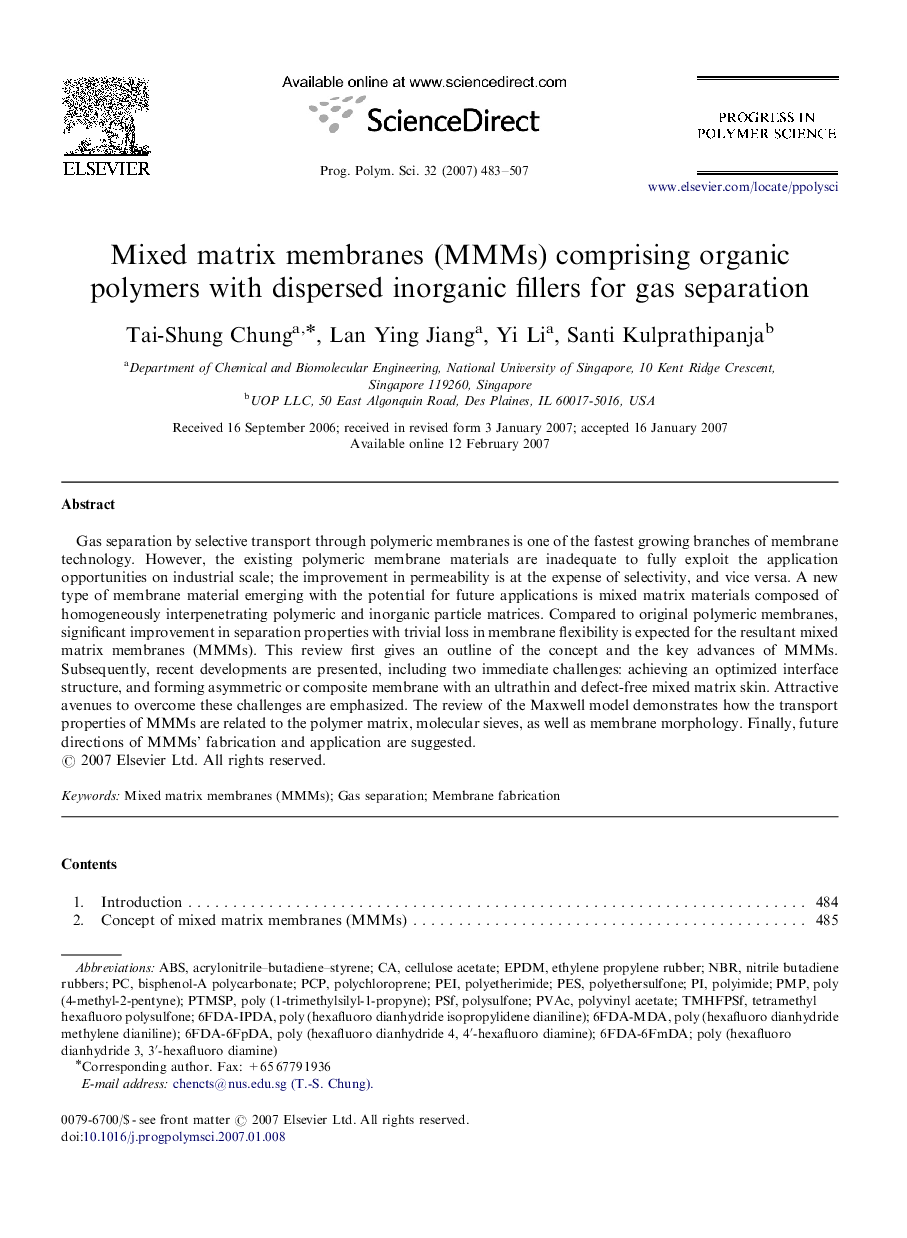| Article ID | Journal | Published Year | Pages | File Type |
|---|---|---|---|---|
| 5209140 | Progress in Polymer Science | 2007 | 25 Pages |
Gas separation by selective transport through polymeric membranes is one of the fastest growing branches of membrane technology. However, the existing polymeric membrane materials are inadequate to fully exploit the application opportunities on industrial scale; the improvement in permeability is at the expense of selectivity, and vice versa. A new type of membrane material emerging with the potential for future applications is mixed matrix materials composed of homogeneously interpenetrating polymeric and inorganic particle matrices. Compared to original polymeric membranes, significant improvement in separation properties with trivial loss in membrane flexibility is expected for the resultant mixed matrix membranes (MMMs). This review first gives an outline of the concept and the key advances of MMMs. Subsequently, recent developments are presented, including two immediate challenges: achieving an optimized interface structure, and forming asymmetric or composite membrane with an ultrathin and defect-free mixed matrix skin. Attractive avenues to overcome these challenges are emphasized. The review of the Maxwell model demonstrates how the transport properties of MMMs are related to the polymer matrix, molecular sieves, as well as membrane morphology. Finally, future directions of MMMs' fabrication and application are suggested.
